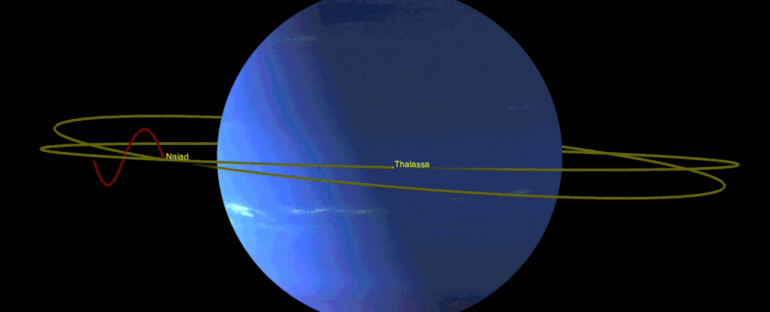Life isn’t always easy for astrophysicists: just when they’ve figured out another aspect of the patterns of movement in our Solar System, along come two of the moons of Neptune to mess everything up.
Life isn’t always easy for astrophysicists: just when they’ve figured out another aspect of the patterns of movement in our Solar System, along come two of the moons of Neptune to mess everything up.
The two moons in question are Naiad and Thalassa, both around 100 kilometres or 62 miles wide, which race around their planet in what NASA researchers are calling a "dance of avoidance".
Compared with Thalassa, Naiad’s orbit is tilted by about five degrees – it spends half of its time above Thalassa and half of it below, in a linked orbit that’s unlike anything else on record.
"We refer to this repeating pattern as a resonance," says physicist Marina Brozovic, from the NASA Jet Propulsion Laboratory. "There are many different types of dances that planets, moons and asteroids can follow, but this one has never been seen before."
The two small moons’ orbits are only around 1,850 kilometres (1,150 miles) apart, but they are perfectly timed and choreographed to keep avoiding each other. Naiad takes seven hours to circle Neptune, while Thalassa takes seven and a half on the outside track.
If you were stationed on Thalassa, you’d see Naiad passing above and below in a pattern that would repeat itself every four loops, as Naiad repeatedly laps its neighbour. The researchers say these manoeuvres keep the orbits stable.
The team used data collected between 1981 and 2016 from telescopes on Earth, Voyager 2, and the Hubble Space Telescope to determine how Naiad and Thalassa are…



